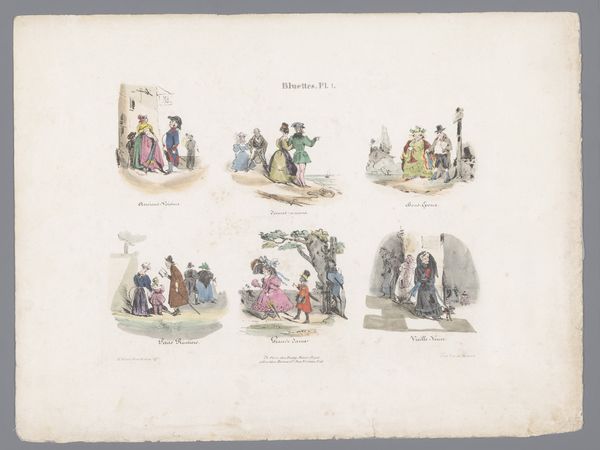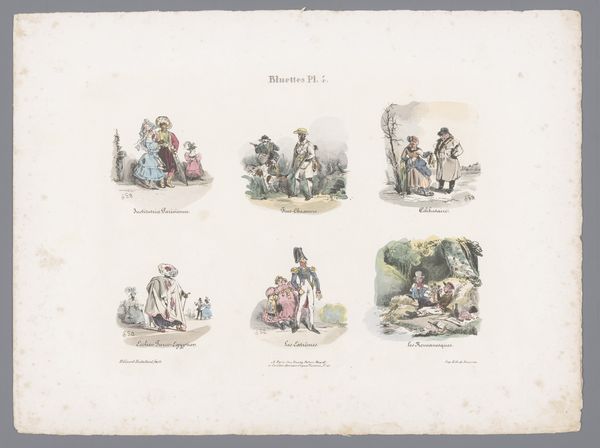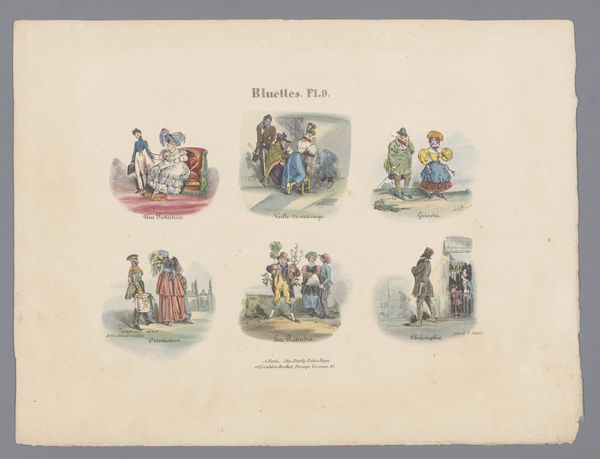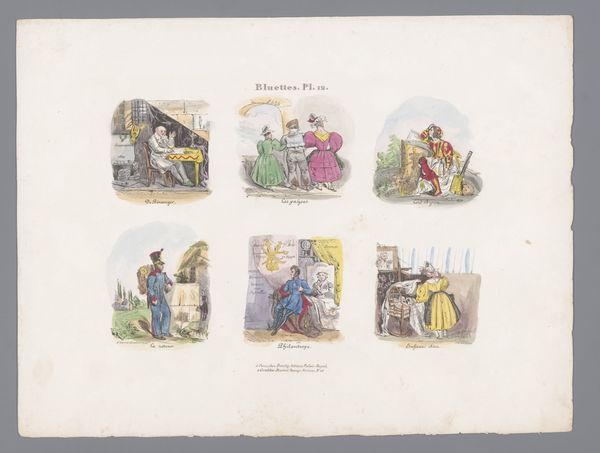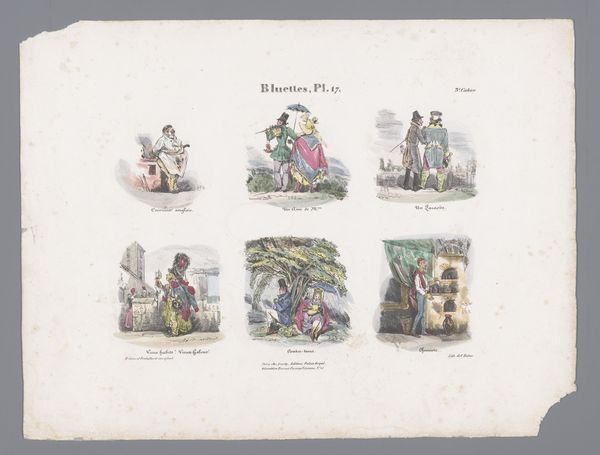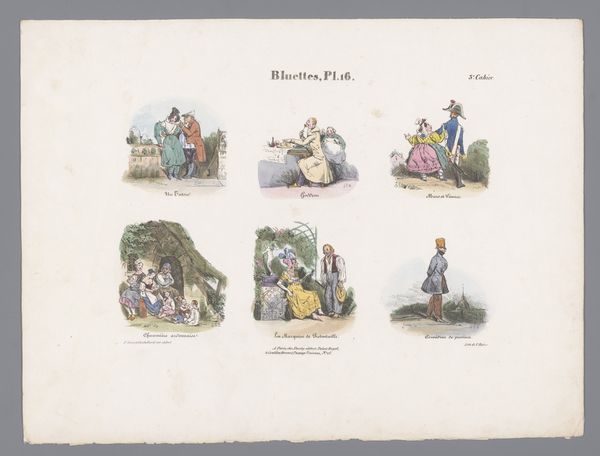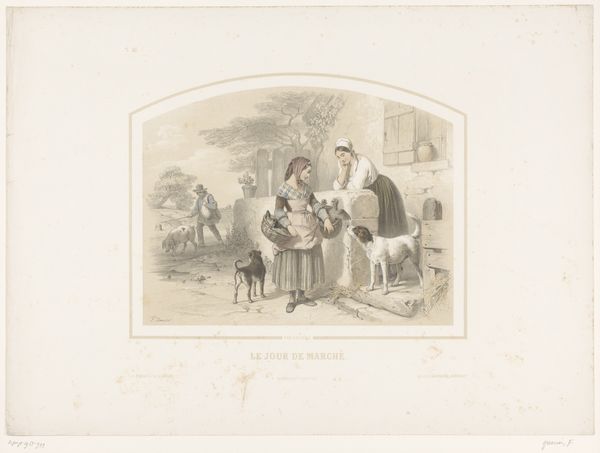
drawing, coloured-pencil, print
#
drawing
#
coloured-pencil
#
narrative-art
# print
#
figuration
#
intimism
#
coloured pencil
#
romanticism
#
genre-painting
#
history-painting
Dimensions: height 274 mm, width 358 mm
Copyright: Rijks Museum: Open Domain
Henri-Gérard Fontallard made this lithograph, "Zes scènes met diverse personen," sometime between 1818 and 1840. The lithographic process allowed for the relatively quick and inexpensive reproduction of images like this one, which is printed on paper. Unlike earlier forms of printmaking that relied on laborious carving, lithography uses a greasy crayon to draw directly onto a stone, which is then chemically treated to accept ink only where the crayon has marked. This image likely began as a drawing, reflecting Fontallard's skill as a draughtsman. The process allowed for the easy creation of multiple impressions, catering to a growing market for popular imagery. The subject matter here, satirical depictions of social types, speaks to a rising middle class with time and money for leisure. The lithograph itself becomes a commodity, mirroring the consumerist culture it depicts. By focusing on the techniques of lithography, we can understand how this print participates in broader economic and social shifts, blurring the lines between art, commerce, and social commentary.
Comments
No comments
Be the first to comment and join the conversation on the ultimate creative platform.
